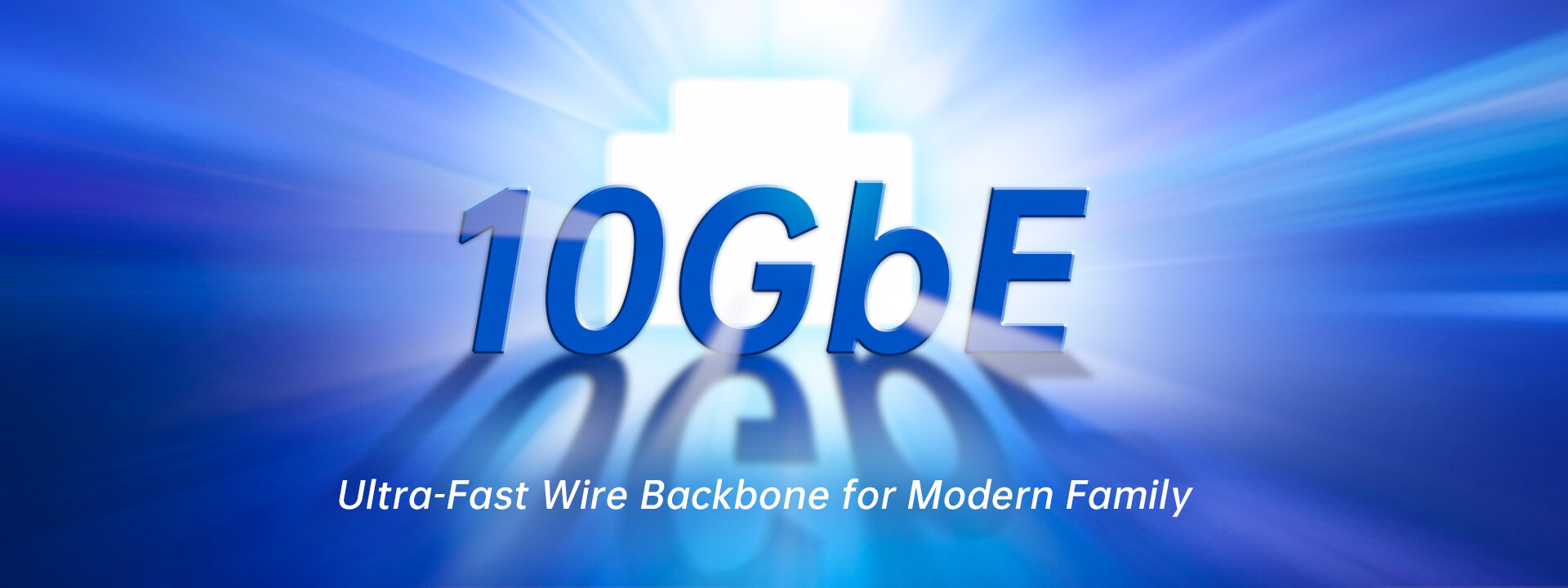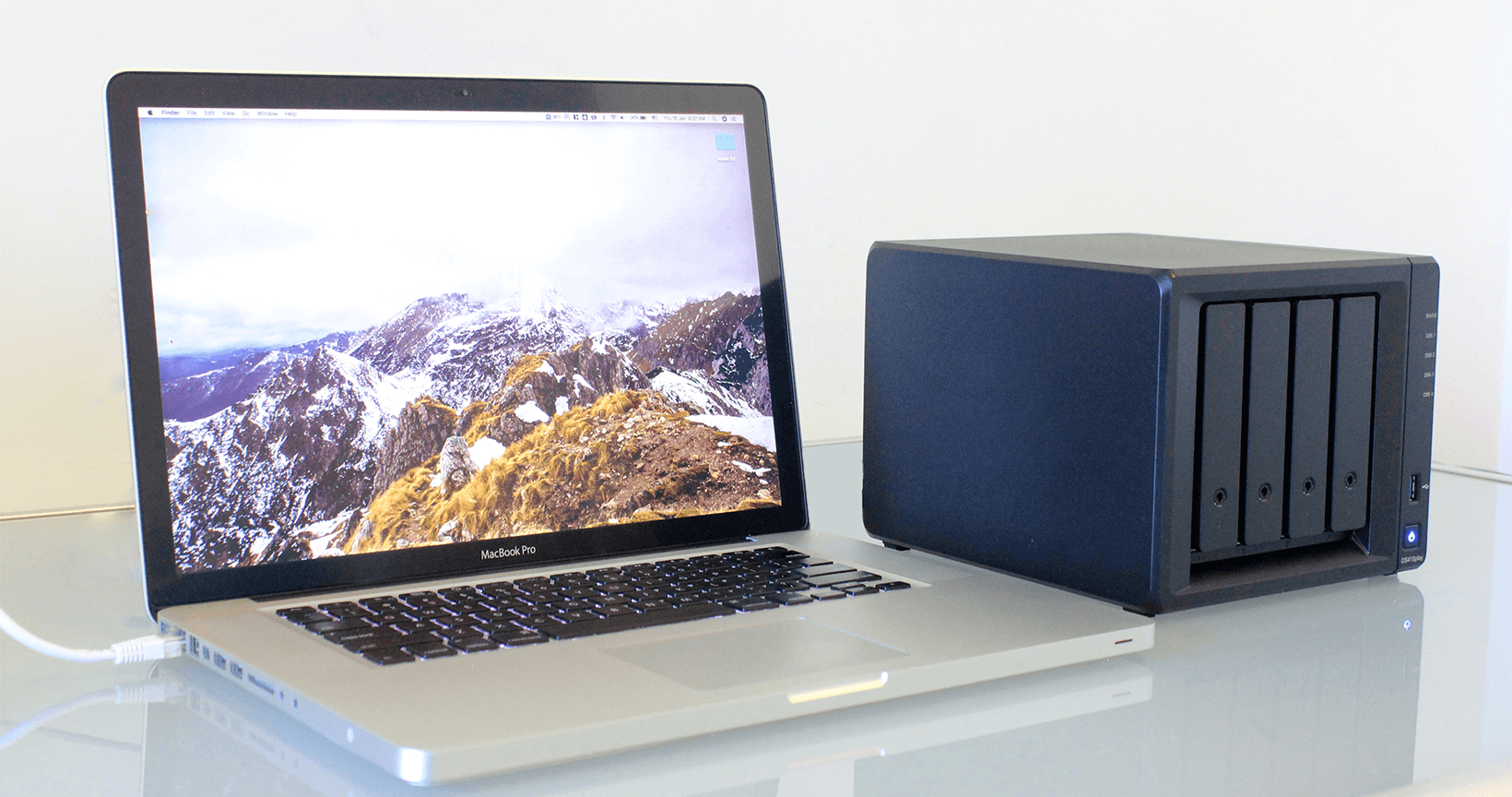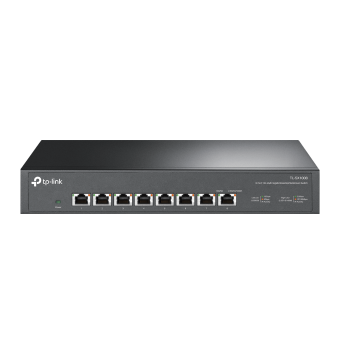What is 10GbE and What Can You Do with It?

10GbE, short for 10 Gigabit Ethernet, is a group of technologies for an ultra-fast wired network that transmits data frames at a rate of 10 billion bits per second. For the last decade or so, we have witnessed advanced computers and drivers that read files at 10 Gbps speed; however, we are still stuck with 1G or 0.1G networks, which can easily feel like a bottleneck between devices. When inter-devices transferring quickly reach the limits of your network, 10GbE is the answer.
What does 10GbE offer?
It is all about the speed—10GbE offers 10 Gbps of transfer rate. To illustrate how fast this is – let us convert it in terms of file storage. 10 Gbps lets you transfer at a rate of 1.25 GB/s when you copy a file to another computer through the network. This basically equates to sending a 20 GB file in under 20 seconds.

10GbE shortens transmission of a 20 GB file by 90%.
What’s more important is—10GbE is so fast that it surpasses the bandwidth of WiFi 6, NAS, and multi-Gig internet access. 10GbE acts as an ultra-fast backbone to connect peripherals and boost your entire network performance.

10GbE is a necessary backbone to unleash advanced peripherals' performance.
What can you do with 10GbE?
Nowadays, ISPs in many areas have started offering Multi-Gig internet access, and in this case, the 10GbE WAN port becomes another choice for unleashing your full internet performance (2.5GbE and 5GbE are also options).

Multi-Gig Internet Access requires Multi-Gig WAN ports.
However, most people do not use 10 Gbps for internet access, because 10GbE is amazing enough for what it could help achieve within a small-scaled network.
In a small-scaled network and home or studios, tools like Airdrop or cloud storage enables easy collaboration. However, when the files grow larger, the barricade between devices emerge due to hours of wait time—many people are still relying on USB drives to share large documents quickly.
“We have seen 10GbE in the business networking industry for a while now, but I’m still really excited to bring the bandwidth to the level of 10G for home users. Because the speed of sharing has now finally caught up to the performance of the storage industry—which means less time wasted. Transferring files now takes 90% less time than before.” said Allen, a TP-Link engineer, and a NAS lover.
With 10GbE, unified storage becomes more feasible. Store your movies and music super-fast and stream them from any authorized device; open a huge design file in seconds and collaborate easily with your friends; or back up your computer in minutes through the network without relying on a USB stick. With a 10 Gbps network, all these tasks cost you only 1/10th of the time compared with a Gigabit network, and 1/100th the time on a 100 Mbps one.

Transfer at 1 GB/s from a Network Attached Storage with 10GbE.
If you are a content creator, indie developer, or just mass consumer of data, 10GbE is a technology you cannot miss. With the ultra-wide bandwidth provided by 10GbE, it is easier to upload your days’ worth of footage, program files, and precious memories onto your centralized storage. This lets you not only streamline your workflow but also reserve the storage space on your working tools, shortening the wait time, and improving overall efficiency drastically.

Editing a large document on another computer feels more responsive.
Should you upgrade to 10GbE?
As the wireless world moves fast into the WiFi 6 and 5G era, the faster 10GbE is also coming to consumer products. So do you need 10GbE? Check our suggestions below:
- If you’re ready to upgrade your download speed to be multi-gig, or;
- If your high-quality workflow always lags due to slow transfer speeds, or;
- If you often share large files like 4K Blu-ray movies, projects, and games between multiple devices, or;
- If you are a NAS-lover and want to unleash your system’s full read/write speeds.
If you match any of these above, then you should at least upgrade your most demanded devices to 10GbE, like your work station, your NAS server, or your networking gateway.
One more tip is—since WiFi technology today can already easily reach the Gigabit bottleneck, you should place your 10G-capable wires (see below) when furnishing the house for future scalability consideration.
How to set up a 10 Gbps network?
To build a 10 Gbps network, you need a 10G-capable network gateway, clients, and cables.
The first thing is the network gateway, which supports connecting all devices at the 10 Gbps rate. To maximize value, you could add a 10G switch to the existing network. If you want to maximize performance, like also enabling wireless devices to enjoy the broad bandwidth, you could pick up a 10G WiFi 6 router.
|
|
Categories |
Models |
|
10G Network Gateway |
WiFi Routers |
Archer AX206 |
|
Switches |
||
The second thing is the clients. Mac Pro, iMac Pro, Mac Mini (2018, 2019, 10GbE version), and some high-end PC systems have built-in 10 Gigabit Ethernet ports. When your clients lack the 10 GbE connectivity, you could equip them with 10 GbE Network Interface Controllers (NIC)—mostly with PCI-E connector with others having Thunderbolt connectors. Remember to check if your current systems have these vacant interfaces before any purchase. Of course, as backup your 2.5GbE could be your plan B if the devices cannot meet the requirements.
|
|
Categories |
Models |
|
10G NIC |
PCI-E Adapters |
|
|
Thunderbolt Adapters |
|
One last thing is the cables which connect everything.
|
|
Standards |
Supported Max Speeds |
|
10G Cables |
UTP Cat 6 |
10 Gbps (within 55 m) |
|
UTP Cat 6a |
10 Gbps (within 100 m) |
|
|
Optical Fiber OM3 |
10 Gbps (within 150 m) |
|
|
Optical Fiber OM4 |
10 Gbps (within 500 m) |
So, ready to hop on 10GbE network and enjoy the explosively-fast speed? Tell us your idea about the network on social media with #tplink10gbe!
- Facebook: facebook.com/tplink
- Twitter: twitter.com/tplink
Von United States?
Erhalten Sie Produkte, Events und Leistungen speziell für Ihre Region





